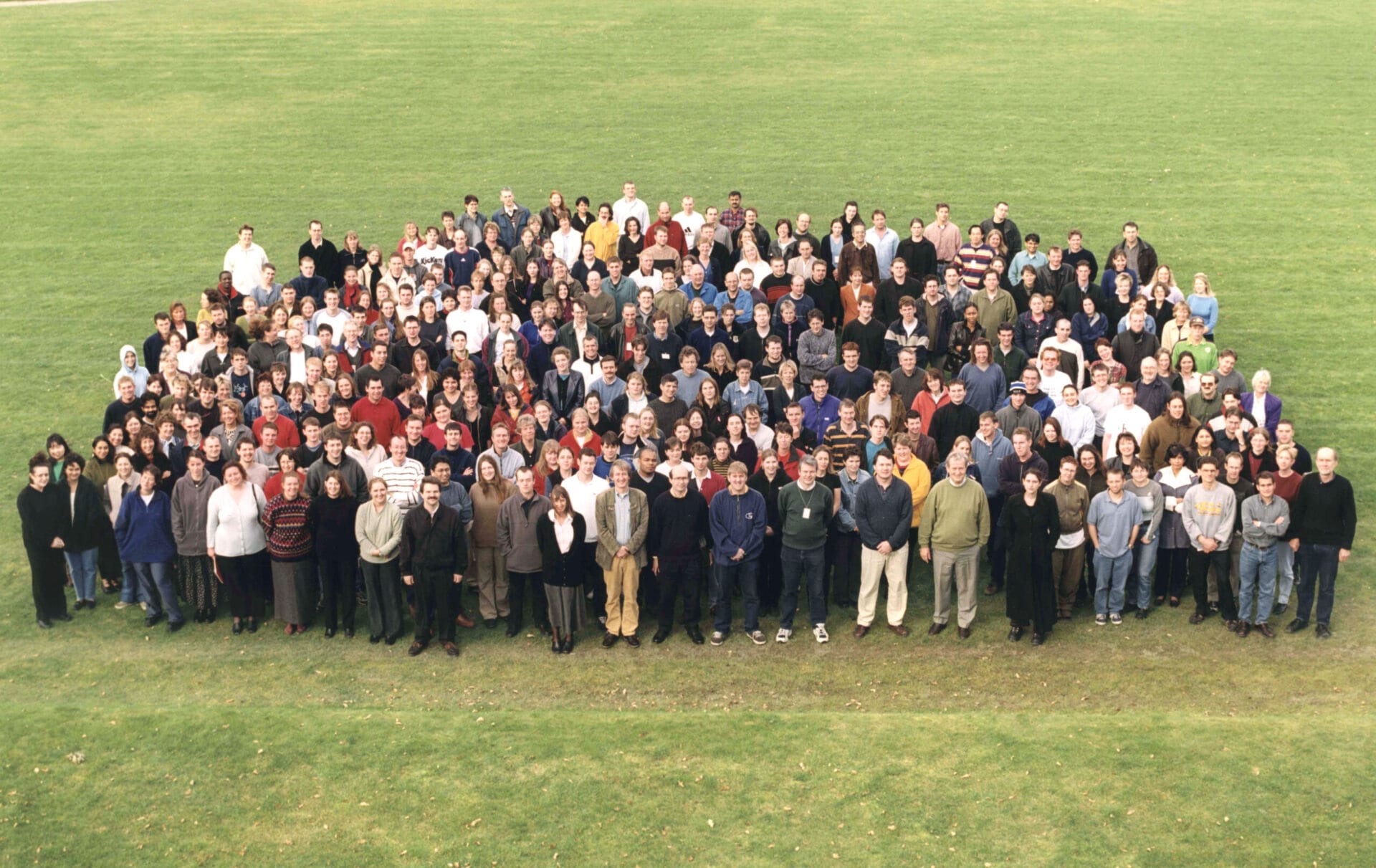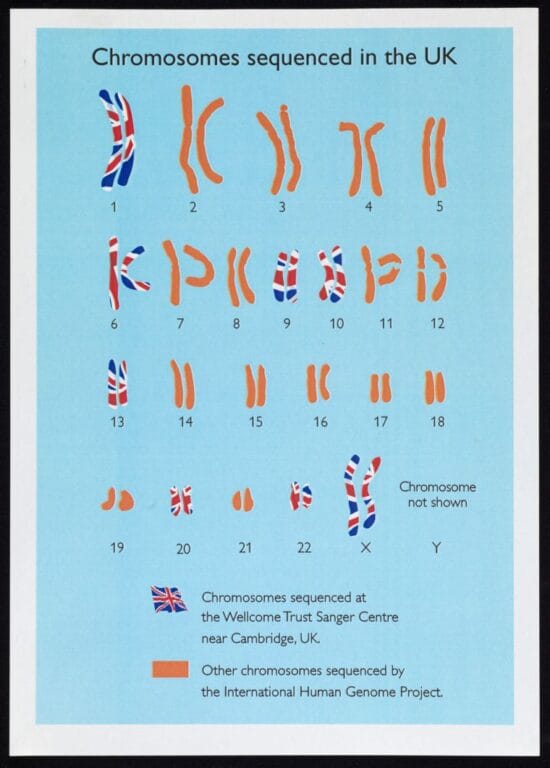Who was involved in the Human Genome Project?

Worldwide collaboration would be essential to sequence the human genome – and the Human Genome Project brought together scientists from across the world.
Key terms
Genome
The complete set of genetic instructions required to build and maintain an organism.
DNA sequencing
The process of determining the order of bases in a section of DNA.
The Human Genome Project was a publicly funded project that brought scientists together from across France, Germany, Japan, China, the UK and the US.
The project ran on such a huge scale, thanks to support and funding in the US – from the Department of Energy and US National Institutes of Health – and later in the UK, from the Medical Research Council and Wellcome Trust.
The project itself would end up costing a huge $3 billion over 13 years.

The US side of the Human Genome Project was initially led by James Watson. The UK side was headed up by John Sulston.
The US side of the Human Genome Project was initially led by James Watson – who co-discovered the structure of DNA – and later by Francis Collins. John Sulston, the then director at the Wellcome Sanger Institute (at that time called the Sanger Centre), led the project in the UK.
Everyone involved was keen that the project was a joint effort. This was partly because it was sequencing the ‘human’ genome, not the ‘American’ or ‘British’ genome – although the genome sequenced during the project was from randomly chosen anonymous donations in the US.
But they also needed worldwide support and effort. The project itself would end up costing a huge $3 billion over 13 years.
The Human Genome Project provided an excellent opportunity to encourage international cooperation in biological science, setting standards in techniques and technologies across the globe to influence future medical research.

The Human Genome Project involved scientists from 20 institutions across France, Germany, Japan, China, the UK and the US.
An international project
In total, the ‘International Human Genome Sequencing Consortium’ – as the Human Genome Project team was known – involved scientists from 20 institutions in six countries: France, Germany, Japan, China, the UK and the US.
Each country played an important role in the project, although five main sites sequenced the majority of the genome. Nicknamed the ‘G5’, these were:
- Wellcome Trust Sanger Institute (then known as the Sanger Centre) in Cambridge, UK
- Broad Institute/Whitehead Institute for Biomedical Research (MIT) in Cambridge, US
- Washington University in St Louis, US
- Baylor College of Medicine in Houston, US
- Department of Energy’s Joint Genome Institute in Walnut Creek, US
The 23 pairs of chromosomes contained in the human genome were divided up between sequencing centres. Here at the Wellcome Trust Sanger Institute we sequenced almost one-third of the human genome, focusing on chromosomes 1, 6, 9, 10, 11, 13, 20, 22 and X (some of which were shared with other centres).

Members of the International Human Genome Sequencing Consortium
Below is a list of all the institutions involved in the Human Genome Project.
- Wellcome Sanger Institute, Wellcome Trust Genome Campus, Cambridge, UK
- Broad Institute/Whitehead Institute/MIT Center for Genome Research, Massachusetts, US
- Washington University School of Medicine Genome Sequencing Center, Missouri, US
- Joint Genome Institute, US Department of Energy, California, US
- Department of Molecular and Human Genetics, Baylor College of Medicine Human Genome Sequencing Center, Texas, US
- RIKEN Genomic Sciences Center, Yokohama, Japan
- Genoscope and CNRS, UMR-8030, Evry Cedex, France
- Genome Therapeutics Corporation Sequencing Center, Genome Therapeutics Corporation, Massachusetts, US*
- Department of Genome Analysis, Institute of Molecular Biotechnology, Jena, Germany*
- Beijing Genomics Institute/Human Genome Center, Institute of Genetics, Chinese Academy of Sciences, Beijing, China
- Multimegabase Sequencing Center, The Institute for Systems Biology, Seattle, Washington, US*
- Stanford Genome Technology Center, Stanford Medicine, California, US
- Stanford Human Genome Center and Department of Genetics, Stanford Medicine, California, US
- University of Washington Genome Center, University of Washington, Washington, US*
- Department of Molecular Biology, Keio University School of Medicine, Tokyo, Japan
- University of Texas Southwestern Medical Center at Dallas, Dallas, Texas, USA*
- University of Oklahoma’s Advanced Center for Genome Technology, University of Oklahoma, Oklahoma, USA
- Max Planck Institute for Molecular Genetics, Berlin, Germany
- Cold Spring Harbor Laboratory, Lita Annenberg Hazen Genome Center, New York, USA
- Gesellschaft für Biotechnologische Forschung mbH, German Research Centre for Biotechnology, Germany
*Sequencing centre is no longer in operation or has since merged with another organisation
The European Bioinformatics Institute in Cambridge, UK, and the National Centre for Biotechnology Information at the US National Institutes of Health also played a key role in providing computational support and analysis for the Human Genome Project. Scientists at the University of California, Santa Cruz, and Neomorphic, Inc. also assisted the assembly of the genome sequence across chromosomes.
